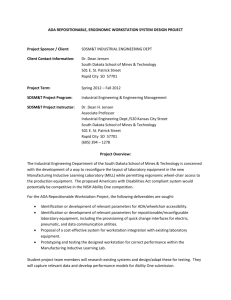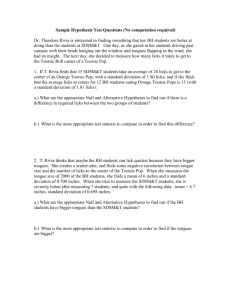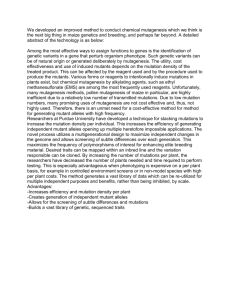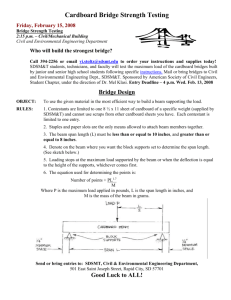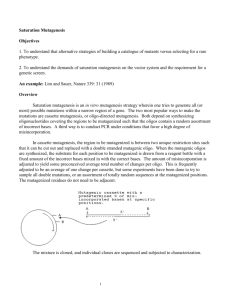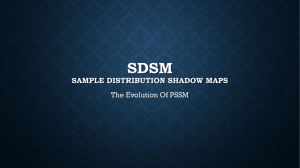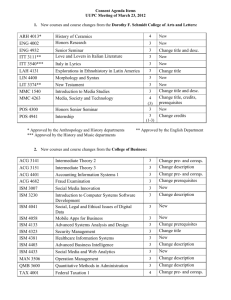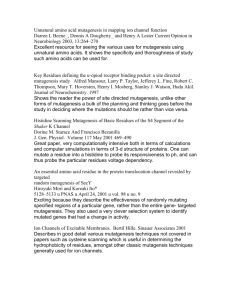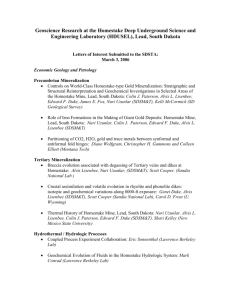bit24960-sm-0001-SuppData
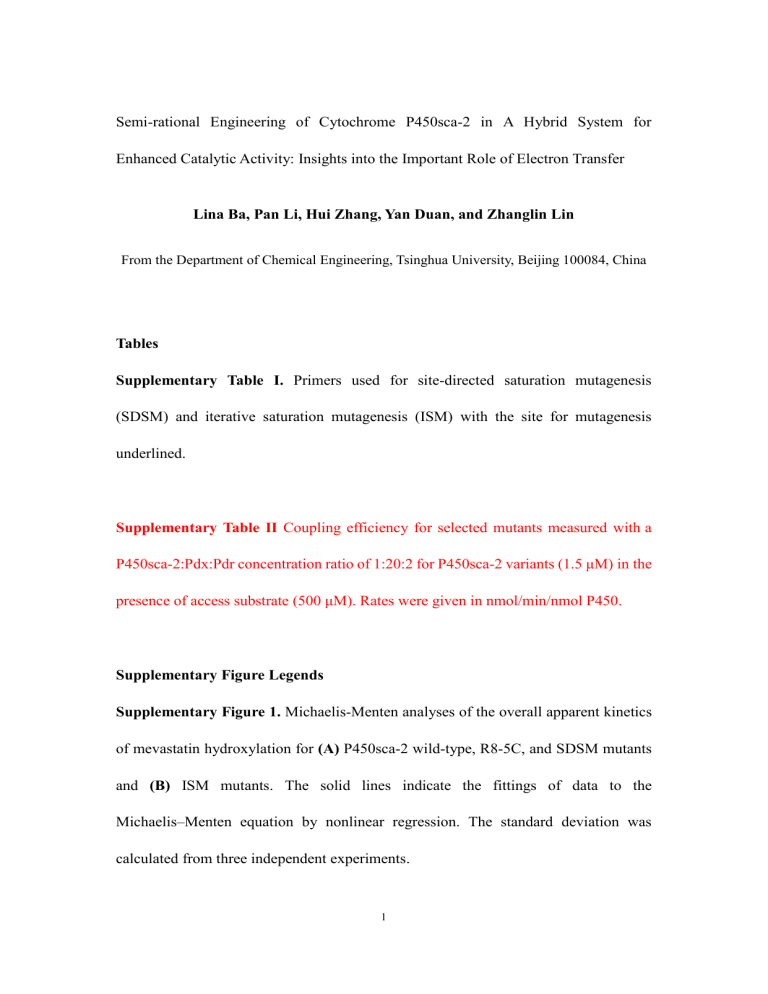
Semi-rational Engineering of Cytochrome P450sca-2 in A Hybrid System for
Enhanced Catalytic Activity: Insights into the Important Role of Electron Transfer
Lina Ba, Pan Li, Hui Zhang, Yan Duan, and Zhanglin Lin
From the Department of Chemical Engineering, Tsinghua University, Beijing 100084, China
Tables
Supplementary Table I. Primers used for site-directed saturation mutagenesis
(SDSM) and iterative saturation mutagenesis (ISM) with the site for mutagenesis underlined.
Supplementary Table II Coupling efficiency for selected mutants measured with a
P450sca-2:Pdx:Pdr concentration ratio of 1:20:2 for P450sca-2 variants (1.5 μM) in the presence of access substrate (500 μM). Rates were given in nmol/min/nmol P450.
Supplementary Figure Legends
Supplementary Figure 1. Michaelis-Menten analyses of the overall apparent kinetics of mevastatin hydroxylation for (A) P450sca-2 wild-type, R8-5C, and SDSM mutants and (B) ISM mutants. The solid lines indicate the fittings of data to the
Michaelis–Menten equation by nonlinear regression. The standard deviation was calculated from three independent experiments.
1
Supplementary Figure 2. Michaelis-Menten analyses of the apparent kinetics of
Pdx-dependent mevastatin hydroxylation for (A) P450sca-2 wild-type, R8-5C, and
SDSM mutants and (B) ISM mutants. The solid lines indicate the fittings of data to the Michaelis-Menten equation by nonlinear regression. The standard deviation was calculated from three independent experiments.
2
Supplementary Table I. Primers used for site-directed saturation mutagenesis (SDSM) and iterative saturation mutagenesis (ISM) with the site for mutagenesis underlined.
Primers Pr
R77-for a
R77-rev b
T85-for
T85-rev
V194-for
Library Sequence
SDSM
SDSM
5'-TTTAAGCAGCGACNNKTTACATGCGGACTTCCCGGC-3' c
5'-CATGTAAMNNGTCGCTGCTTAAACGCGGG-3' c
SDSM and ISM 5'-GGACTTCCCGGCCNNKTCTCCGCGCATCAAAGCATTCC-3'
SDSM and ISM 5'-GAGAMNNGGCCGGGAAGTCCGCATGTA-3'
SDSM and ISM 5'-TGCANNKGCGGCACGCGACGATTTTG-3'
V194-rev
T119-for
T119-rev
N363-for
SDSM and ISM 5'-ATCGTCGCGTGCCGCMNNTGCAGAATCTGCGTCAACGGCTTG-3'
SDSM 5'-TCTGAGTTTNNKGTCAAACGCATCAAAGGCATGCGCCCAGATG-3'
SDSM 5'-TGCGTTTGACMNNAAACTCAGAGATCGTCATG-3'
SDSM
N363-rev SDSM
Cast-T119-for ISM
Cast-T119-rev ISM
C ast -N363 -for ISM
5'-TGTTTAGGCCAGNNKTTAGCACGCTTAGAACTGGT-3'
5'-GCTAAMNNCTGGCCTAAACACTGGTGAAC-3'
5'-TCTGAGTTTNDTGTCAAACGCATCAAAGGCATGCGCCCAGATG-3' d
5'-TGCGTTTGACAHNAA ACTCAGAGAT CGTCATG-3' d
5'-TGTTTAGGCCAGNDTTTAGCACGCTTAGAACTGGT-3'
C ast -N363 -rev ISM 5'-GCTAAAHNCTGGCCTAAACACTGGTGAAC-3' a for: forward primer for site-directed saturation mutagenesis.
b
rev: reverse primer for site-directed saturation mutagenesis.
c
NNK (MNN): degeneracy codon used in the forward (reverse) primer to introduce saturation mutagenesis; N stands for A+C+G+T, K stands for T+G, and
M stands for A+C. d
NDT (AHN): degeneracy codon used in the forward (reverse) primer to introduce saturation mutagenesis; H stands for A+T+C.
3
Supplementary Table II Coupling efficiency for selected mutants measured with a
P450sca-2:Pdx:Pdr concentration ratio of 1:20:2 for P450sca-2 variants (1.5 μM) in the presence of access substrate (500 μM). Rates were given in nmol/min/nmol P450.
Background NADH consumption rate a
R8-5C
11.94 ± 3.35
Variant I 19.15 ± 3.44
Variant II 14.46 ± 1.68
Variant III
12.24 ± 4.14
NADH consumption rate b
2.29 ± 4.16
13.48 ± 10.39
17.93 ± 11.86
Product formation rate
0.82 ± 0.01
4.60 ± 0.19
5.12 ± 0.52
5.25 ± 0.65
Coupling efficiency (%) c
35.81
34.12
28.56
13.87 ± 7.53 37.85 a The background NADH consumption rate was measured in the absence of substrate. b
The NADH consumption rate of each variant was calculated with the subtraction of the respective background NADH consumption. c
Coupling efficiency was calculated as the percentage of NADH utilized for product formation over the total NADH consumption.
4
Supplementary Figure 1
A
B
5
Supplementary Figure 2
A
B
6
